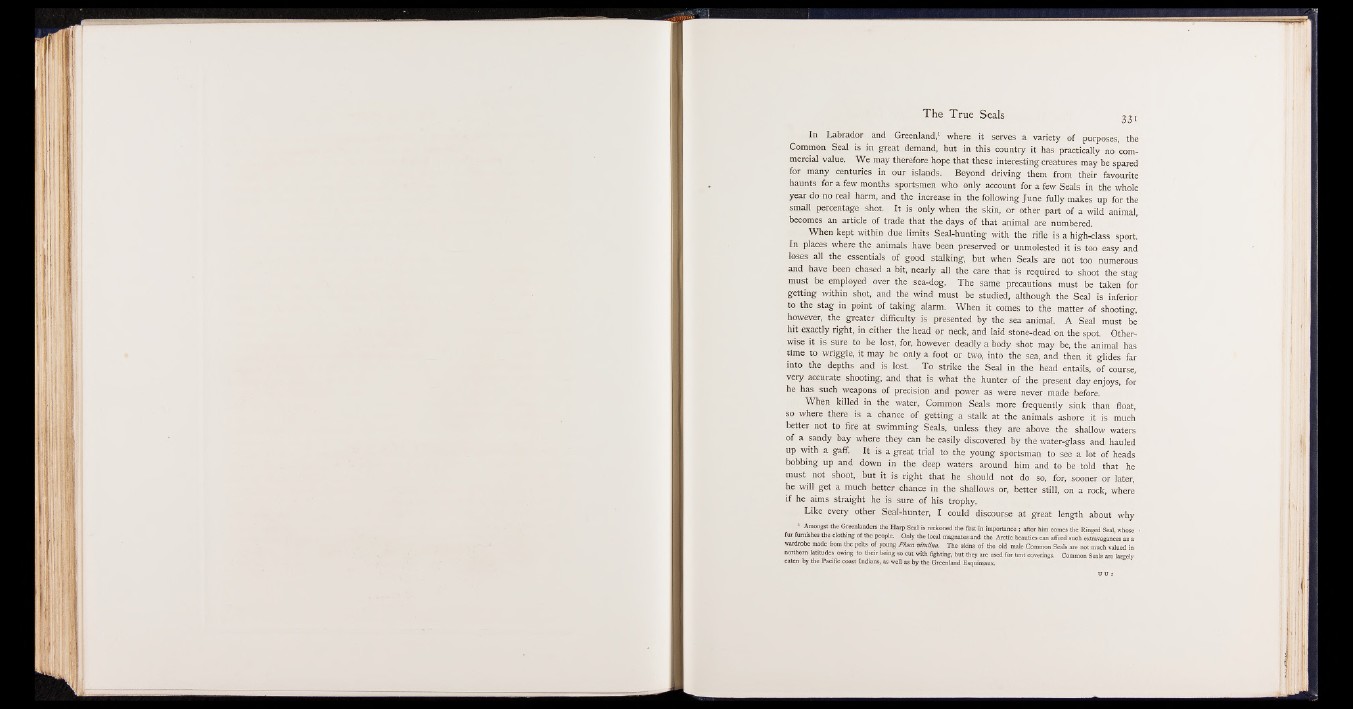
In Labrador and Greenland,1 where it serves a variety of purposes, the
Common Seal is in great demand, but in this country it has practically no commercial
value. We may therefore hope that these interesting creatures may be spared
for many centuries in our islands. Beyond driving them from their favourite
haunts for a few months sportsmen who only account for a few Seals in the whole
year do no real harm, and the increase in the following June fully makes up for the
small percentage shot, it is only when the skin, or other part of a wild animal,
becomes an article of trade that the days of that animal are numbered.
When kept within due limits Seal-hunting with the rifle is a high-class sport.
In places where the animals have been preserved or unmolested it is too easy and
loses all the essentials of good stalking, but when Seals are not too numerous
and have been chased a bit, nearly all the care that is required to shoot the stag
must be employed over the sea-dog. The same precautions must be taken for
getting within shot, and the wind must be studied, although the Seal is inferior
to the stag in point of taking alarm. When it comes to the matter of shooting,
however, the greater difficulty is presented by the sea animal. A Seal must be
hit exactly right, in either the head or neck, and laid stone-dead on the spot. Otherwise
it is sure to be lost, for, however deadly a body shot may be, the animal has
time to wriggle, it may be only a foot or two, into the sea, and then it glides far
into the depths and is lost To strike the Seal in the head entails, of course,
very accurate shooting, and that is what the hunter of the present day enjoys, for
he has such weapons of precision mad power as were never made before.
When killed in the water, Common Seals more frequently .'Sink than float,
so where there is a chance of getting a stalk at the animals ashore it fg much
better not to fire at swimming Seals,/unless they are above the shallow waters
of a sandy bay where they can be easily discovered by the water-glass and hauled
up with a gaff. It is a great trial to the young sportsman to see a lot of heads,
bobbing up and down in the deep waters around him and to be told that he
must^ not shoot, but it is right that he sh ou S n o t dp-s^-Ibi/ sooner or later,
he will get a much better chance in the shallows or, better still, on a rock, where
if he aims straight he is sure of his trophy.
Like every other Seal-hunter, I could discourse at great length about why
1 Amongst the Greenlanders the Harp Seal is reckoned the first in importance ; after him comes the Ringed Seal, whose •
fur furnishes the clothing of the people. Only the local magnates and the Arctic beauties can afford such extravagances as a
wardrobe made from the pelts of young Phoca vitulina. The skins of the old male Common Seals are not much valued in
northern latitudes owing to their being so cut with fighting, but they are used for tent coverings. Common Seals are largely
eaten by the Pacific coast Indians, as well as by the Greenland Esquimaux.